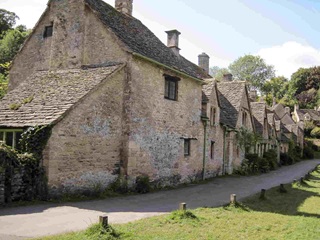Moving to the countryside: top tips for your off-grid heating

Whether you’re wanting to be more environmentally friendly or are trying to save on switching costs, we’ve compiled some of our top rural living tips to help you find the right energy solution for you and guide you through the process.
What should you consider?
There are some aspects that you should consider before deciding how to heat your home if you’re moving to a rural area. For example, making sure you do as much research as possible can really help in the long run. Looking into whether your house is listed or within a conservation area is important as these kinds of properties can have restrictions for things like heating systems. Similarly, making sure there are reliable tradespeople like heating engineers in the local area can make things simpler for everything from installing a new heating system through to maintaining it once it’s in.
Within your property, checking that insulation has been installed correctly and that things like the windows are in good working order in older buildings will make a big difference to how efficient your heating is, so it’s always worth checking.
In the past, oil has been a common choice for heating people’s rural homes. But, as we have become more environmentally conscious as a country, and as more fuel options and smarter storage options have been developed, LPG has become an increasingly popular option for rural homes.
There are also sustainable options such as air-source heat pumps that are great for the environment but can be costly to install and requires a specialist installer. In some cases, heat pumps can’t heat a home consistently through the colder months so a boiler is required alongside it, which can make a good combination for trying to reduce carbon emissions whilst not having to worry about shortages of heating in your home.
What is oil?
Heating oil is a form of kerosene produced through the heating of crude oil and can be more damaging to the environment than the likes of LPG.
What is LPG?
LPG is a hydrocarbon gas that exists in a liquefied form. LPG is a colourless, low carbon and highly efficient fuel which is usually collected as a by-product of the crude oil refinery process.
LPG is a versatile fuel that can be used for cooking appliances as well as for central heating and water, saving the need to store a separate fuel for those appliances. LPG can reduce your carbon emissions by up to 16% compared to oil*, so it’s worth considering as a fuel that’s more friendly to the environment but still efficient.
In addition, Calor also offers the option of auto-ordering, which means you don’t have to worry about your fuel levels getting low and needing to arrange a fuel delivery. A clever content gauge in the LPG tank will continuously monitor your usage and notify Calor when to schedule your next LPG refill.
What is BioLPG?
Another versatile fuel with even lower carbon emissions is BioLPG. It can reduce your emissions by up to 38% compared to oil*, and because it works in the same way as LPG, you can use the same LPG tank and boiler, so switching costs aren’t a problem and all the same, appliances can be used, so nothing has to change.
LPG tanks can be installed onto a fixed base, or if you prefer it to be out of sight, Calor offers an underground option with a discreet green cover and easy access for refilling* subject to site survey. If you have limited outside space, gas bottles can be a great choice, plus, a change-over valve automatically switches from one gas bottle to another, so you have a continuous gas supply.
How setting up an LPG boiler in your home works
If you’re moving to the country, or you’re already using another fuel but would like to make the transition over to LPG or BioLPG, our hassle-free switching process makes it is as easy as a few simple steps.
After receiving your free, personalised quote, a Calor energy expert will speak with you to find the perfect solution for your home and help Calor understand your requirements. The next step is installing an LPG boiler. For this, you'll need a trusty LPG qualified Installer to fit your new boiler and hook everything up inside. You can find one through Calor’s quote tool, or by using the handy LPG Boiler Installer tool to find local, Gas Safe registered engineers.
Once you’ve had your boiler installed, Calor will then install your chosen storage option. With a range of storage options available, it’s easy to find an option that fits seamlessly into your home.
There’s more information available on our website if you would like to learn more about switching to LPG or BioLPG: https://www.calor.co.uk/home-energy/using-lpg/switching-lpg-suppliers
Sources
*https://www.calor.co.uk/home-energy/new-to-lpg/switch-from-oil